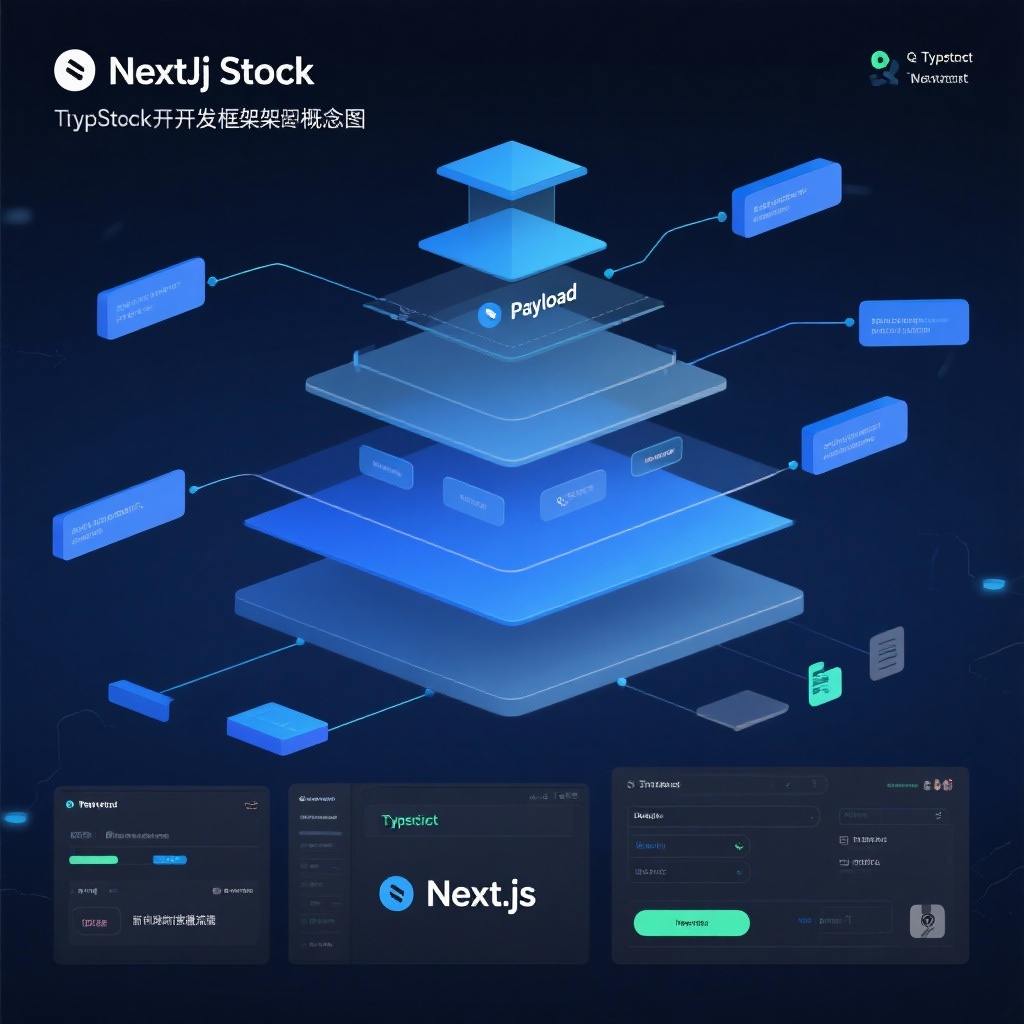Payload Framework: Next.js TypeScript Backend & Admin Panel
Streamline 2025 Next.js development with Payload framework - the open-source headless CMS integrating TypeScript backend & admin panel for seamless full-stack workflows.

Payload Framework Deep Dive: The New Headless CMS Choice for Full-Stack Development in 2025
In modern web development, finding a solution that delivers robust backend capabilities without sacrificing frontend flexibility remains a persistent challenge for developers. Payload, an open-source full-stack Next.js framework, has rapidly gained traction in the developer community since its 2021 launch, now boasting 37,248 GitHub stars and 2,858 forks. This TypeScript backend framework not only provides developers with an instantly usable admin panel but also functions as a headless CMS or powerful application-building tool, completely transforming traditional CMS development workflows.
Payload Framework Overview: A Next.js-Native Full-Stack Development Solution
Developed by the payloadcms team, Payload is a Next.js-native framework that breaks free from traditional CMS limitations by allowing developers to install and use it directly within the /app folder of existing Next.js projects. This architectural design has positioned Payload as a standout choice in 2025's full-stack development landscape, particularly suited for development teams needing to rapidly build complex applications while maintaining high levels of customization.
Unlike conventional CMS platforms, Payload doesn't rely on third-party services, instead seamlessly integrating frontend and backend within the same project structure. This design not only streamlines the development process but also eliminates the communication complexities common in decoupled architectures. As of 2025, Payload has released version 3.0, introducing numerous performance optimizations and feature enhancements that further solidify its position in the backend framework arena.
Core Advantages of Payload: Transcending Traditional CMS Development Experiences
Next.js-Native Architecture: Seamless Integration with Modern Frontend Development
Payload's most significant advantage lies in its Next.js-native design. Operating directly within the /app folder of Next.js projects, it enables developers to query databases directly using React Server Components (RSC) without needing REST or GraphQL interfaces. This direct access approach not only enhances application performance but also simplifies data fetching logic, creating a more streamlined full-stack development experience.
TypeScript Backend: Ensuring Type-Safe Development
As a primarily TypeScript-developed framework, Payload offers comprehensive type support throughout the entire development process. From data model definitions to API interactions, TypeScript's type system ensures code reliability and maintainability. Automatically generated type definitions reduce manual type declaration work while minimizing runtime error risks—especially valuable for building large-scale applications.
The Perfect Fusion of Headless CMS Flexibility and Admin Panel Utility
Functioning as a headless CMS, Payload delivers content management flexibility while its built-in React admin panel retains the usability of traditional CMS platforms. This fully customizable admin interface allows developers to extend functionality according to specific needs without being constrained by fixed layouts. Features like the Lexical rich text editor, block-based layout builder, and conditional field logic make content management both powerful and intuitive.
Deployment Freedom and Vendor Lock-In Prevention
Unlike many SaaS CMS solutions, Payload is completely open-source and deployable in any environment—including Vercel's serverless architecture—with options for free hosting. This deployment flexibility eliminates vendor lock-in risks, providing greater freedom for future project migration and scaling.
Practical User Experience: A Streamlined Full-Stack Development Workflow
Payload features an exceptionally low entry barrier, enabling rapid new project creation with a simple command:
bash
pnpx create-payload-app@latestFor newcomers, the official website template (pnpx create-payload-app@latest -t website) is recommended, containing a complete frontend implementation (based on Tailwind CSS), custom rich text blocks, on-demand revalidation, and real-time preview capabilities that showcase Payload's full range of core competencies.
By 2025, the Payload ecosystem has matured considerably, offering various one-click deployment templates covering application scenarios from simple blogs to enterprise-level websites. Official templates and community-contributed templates (marked as payload-template) provide rapid startup solutions for different project requirements, significantly reducing development cycles.
Ideal Use Cases: Where Payload Framework Excels
Corporate Websites and Content-Intensive Applications
Payload's block-level content builder and localization support make it an ideal choice for corporate websites and multilingual content platforms. Version control and draft functionality ensure content publishing process integrity, while granular access controls meet team collaboration security requirements.
Customized Management Systems
For projects requiring highly customized admin interfaces, Payload's extensible admin panel offers unlimited possibilities. Developers can extend interface functionality using React components to implement business-specific workflows and data visualization.
Full-Stack SaaS Applications
Payload's authentication system, hook mechanisms, and API design make it a powerful backend framework for building SaaS applications. Combined with Next.js frontend capabilities, developers can rapidly construct complete SaaS solutions from MVP to production-grade applications.
Considerations When Using Payload
Despite its numerous advantages, consider the following factors when choosing Payload:
- Learning Curve: While Payload simplifies many development processes, developers unfamiliar with Next.js and TypeScript will still need some learning investment.
- Ecosystem Size: Compared to established CMS platforms like WordPress, Payload's plugin ecosystem—though growing rapidly—remains smaller, potentially requiring custom development for certain specific functionalities.
- Version Updates: As an actively developed framework with frequent version iterations, migration guides should be consulted during upgrades (such as the version 3.0 migration documentation).
Conclusion: Payload Leading 2025 Full-Stack Development Trends
By combining Next.js frontend advantages with robust backend capabilities, Payload provides a unified solution for modern full-stack development. Whether used as a headless CMS for content management or for building complex web applications, Payload helps development teams deliver projects more efficiently through its TypeScript support, extensible architecture, and deployment flexibility.
For teams prioritizing development efficiency, requiring high customization, and seeking to avoid vendor lock-in, Payload undoubtedly represents a backend framework worth exploring in 2025. As its ecosystem continues to mature, Payload is poised to maintain rapid growth in full-stack development and CMS领域, becoming the tool of choice for an increasing number of developers.